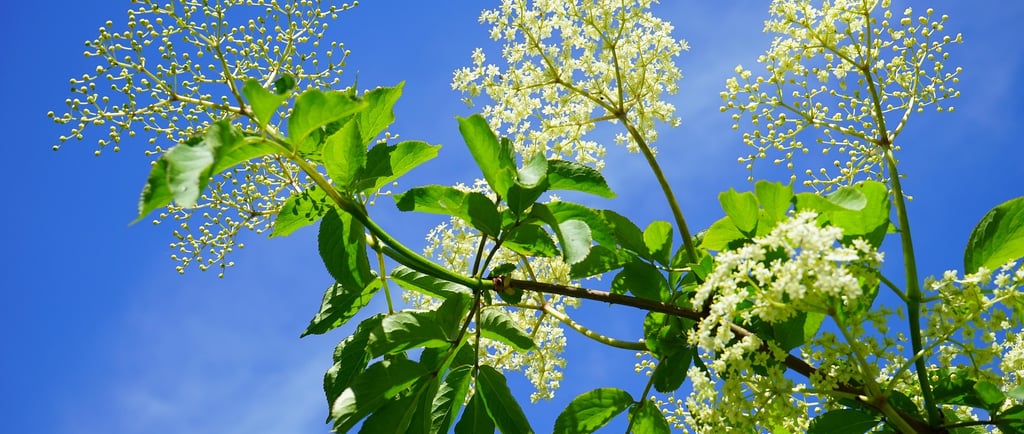🎶🌿 The Harp in the Hedge 🌼 Elder’s Healing Magic 🫖💫
🌿 A follow-up story that connects The Flower and Ecology chapters in the Biology Album. 🌼🕊️🕊️ It introduces children to a special type of inflorescence called a corymb, where each tiny flower blooms at the same height, creating a flat-topped floral table for pollinators. The elderflower isn’t just a fragrant bloom—it’s part of the hedgerow, a living fence that offers food, shelter, and seasonal gifts to bees, birds, and small creatures all year round. It invites children to make their own elderflower lemonade while researching: 💭 “What other plants grow in corymbs? What life is hiding in the hedgerow?”
BIOLOGY STORIES
6/20/20253 min read


Today, our story takes us for a quiet walk along the edge of a forest or through a hedgerow in early summer—where the air carries a light, lemony scent… 🍋🌿✨ If you follow your nose and look closely, you might spot a tall, bushy shrub with big, flat, creamy flower clusters made of hundreds of tiny blossoms. This is the elder tree, offering one of its earliest gifts of the year.🌼🌳
The name elder comes from the Anglo-Saxon word æld, meaning “fire,” because people once made bellows from its hollow stems to help light a flame. 🔥 And flower—from Latin flos, meaning blossom—reminds us that this is just the beginning of the tree’s cycle. In late summer, the flowers will turn into shiny dark berries: the elderberries (👏 el 👏 der 👏 ber 👏 ries). 🌼➡️🍇 🌿
🌿 The sugars made in the elder tree’s leaves travel down through the petioles—those little stalks that hold the berries—to be stored in the fruits. But the sugars don’t travel alone… they carry pigments too, the natural plant colors that give elderberries their deep purple glow. If you look closely, you might spot a secret signal: even the petioles begin to blush red as the pigments move through them. It’s like the plant is painting itself from the inside out! 🎨🍇
But now let's investigate closely at the shape of the elderflower. Each cluster is a special kind of inflorescence—a group of flowers that grow together in a certain pattern. This one is called a corymb (👏 co 👏 rymb). 🌼🌿 The stems holding each tiny flower are all different lengths—but they stretch up to bloom at the same height, like the ribs of a flat-topped umbrella. ☂️
The name corymb comes from the ancient Greek word korymbos, meaning “a cluster of flowers or fruit.”And that’s exactly what the elder tree offers—first, a soft, fragrant cluster of flowers in early summer, and later, a rich cluster of berries. 🌼➡️🍇 From a distance, it may look like a single large flower—but really, it’s many small ones working together in harmony, like a gentle village of blooms. 🌸🏡
Its flat flower heads are like open-air buffet tables for pollinators. 🐝✨ Bees, hoverflies, and other tiny visitors move from floret to floret, sipping nectar with ease. And when summer fades and the flowers transform into berries, new guests come to feast. 🍇🐦 Through the changing seasons, the elder plant serves many guests—offering both food and shelter to those who need it. 🌼➡️🍇
And people have noticed. Elder has long been a favorite of herbalists. Elderflowers are often used to make fresh lemonade and syrups. In the old days, healers called it “the medicine chest of the countryside.” Some people even believed elder trees had protective spirits living inside them, and they were careful not to cut one down without asking permission. 🌳✨
The plant’s scientific name is Sambucus nigra (👏 Sam 👏 bu 👏 cus ➡️ ni 👏 gra), and it comes from Latin. Sambuca was the name of an ancient stringed instrument—possibly the first known bowed harp in history! 🎼✨ Its wooden frame was often carved from plants with hollow stems, just like the elder tree. Some believe shepherds and villagers used elder wood to make simple flutes and whistles too! 🎶🌿 And nigra means black—named for the dark, juicy berries that grow after the flowers have faded. 🍇💜
💛In folk medicine traditions across the world, elderflower tea has been used for centuries to support the immune system, ease colds, and help with fevers or allergies. Many people make elderflower syrup by steeping the blossoms in water with lemon and sugar. This syrup is often mixed with sparkling water, lemonade, or even apple juice to create fragrant, fizzy drinks for hot days.🍋🍹
And about the berries… well, that’s another story for another day. 😉🍇
💭 I wonder… What other flowers grow in corymbs? Did people ever use these berries to dye cloth with their deep purple color? What about heading out to gather some elderflower corymbs and exploring different recipes for refreshing summer drinks?
With Montessori joy,
Vanina 😊

